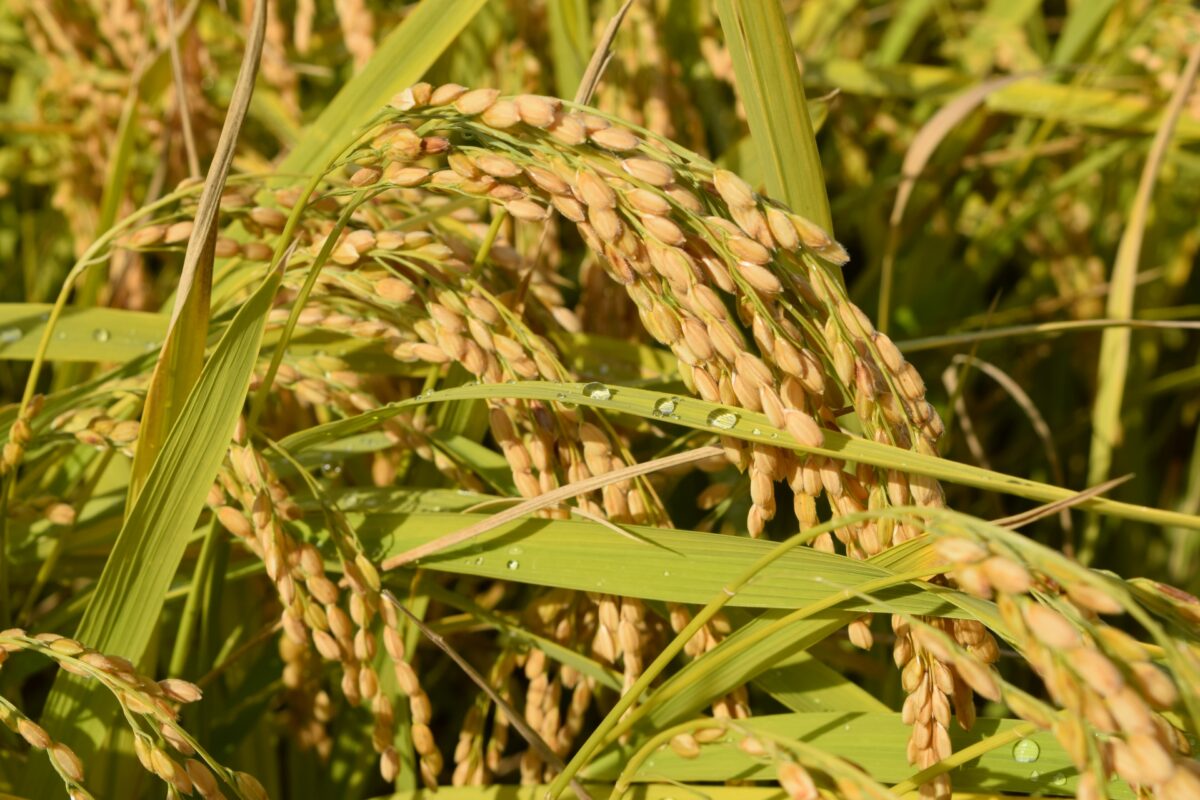Experience the Charm of Kanro Through Nationwide Travel! The Forty Seasonal Divisions and the Beauty of Japan

『 This article is… 』
This page focuses on the traditional Japanese culture of ‘Kanro’, introducing beautiful landscapes and customs related to Kanro from across Japan, ranging from the first snow in Hokkaido to the autumn leaves in Kyoto, and the tea culture in Shizuoka. It is ideal for those interested in Japan’s four seasons and regional cultures, offering deep insights into the rich nature and cultural diversity of Japan, and providing inspiration for planning your next trip.
Hello, I am Kasumi, a travel web writer. In this article, I will introduce you to ‘Kanro’ (Cold Dew), one of Japan’s forty seasonal terms, through my travel experiences. I will share the unique customs, history, and beauty of Kanro that I felt while traveling across all 47 prefectures of Japan. The period of Kanro, which deeply evokes the essence of Japanese autumn, is a special time where you can experience the rich expressions of nature and the cultural differences of each region. Through this article, I will present the meaning, characteristics, and the contemporary role of Kanro, as seen through my eyes.
Cold Dew (Kanro) – One of the Forty Seasonal Terms
The Meaning and Origin of Cold Dew
Cold Dew (Kanro) is one of the twenty-four traditional Japanese solar terms and is also included in the forty seasonal terms. This period begins around October 8th each year, marking a time when the air gradually cools and the dew feels cold. The name derives precisely from this phenomenon, where the dew of morning and evening becomes chilly. The period of Cold Dew symbolizes the deepening of autumn and has historically been significant for agriculture and as a marker of seasonal change.
Characteristics of Cold Dew
During Cold Dew, rice harvesting occurs throughout Japan, welcoming the season of autumn harvest. The climate becomes cooler, known as the autumn of appetite, offering a variety of autumnal flavors. In Hokkaido, where I visited, the season is rich in seasonal tastes such as new rice, autumn salmon, chestnuts, and mushrooms. Additionally, regions begin to experience autumn leaves, making the Cold Dew period an attractive time to feel the natural transitions.
Regional Cold Dew
Due to Japan’s extensive geography, the landscapes and customs of Cold Dew vary significantly by region. For example, while warm days continue in Okinawa, Hokkaido often starts to experience colder weather. These regional differences narrate the richness of Japan’s diverse cultures and customs. One of the most impressive experiences during my travels was the beginning of the autumn leaves in Arashiyama, Kyoto, offering a serene beauty away from urban bustle.
In this section, I touched upon the meaning, characteristics, and regional differences of Cold Dew. It’s an important period to experience the transitions of Japan’s four seasons. The next section will focus on the historical and customary aspects related to Cold Dew.
Cold Dew and Japanese History & Customs
Historical Background of Cold Dew
Cold Dew holds a significant place in the traditional Japanese calendar. In Japan’s agrarian society, solar terms including Cold Dew were used as indicators for agricultural activities. For instance, in the Edo period, the arrival of Cold Dew marked the peak of rice harvesting and the beginning of preparations for winter. These activities have influenced modern Japanese customs and culture.
Regional Customs and Cold Dew
Unique customs and events associated with Cold Dew exist in various parts of Japan. For example, in Shizuoka Prefecture, there is a tradition called ‘Cold Dew’s Long Nights,’ where families and friends gather to enjoy the extended evenings. In Kyoto, there’s a custom of eating natto (fermented soybeans) on the day of Cold Dew, wishing for good health. These customs vividly reflect the characteristics of each region, offering a fascinating experience through travel.
Cold Dew and Modern Japan
In modern Japan, Cold Dew is predominantly recognized as a seasonal milestone on the calendar. However, in some regions, traditional customs are still vividly practiced, cherished as unique autumn events. For example, in Miyagi Prefecture, my visit coincided with local festivals celebrating Cold Dew, reinforcing community bonds. These traditions continue to be cherished as a cultural symbol of Japan’s seasons.
I introduced Cold Dew in relation to Japanese history and customs. The various regional customs and events offer a glimpse into the depth of regional culture and history. In the next part, I’ll talk about the natural beauty and landscapes unique to the Cold Dew period.
The Natural Beauty of the Cold Dew Season
Japanese Nature during Cold Dew
The Cold Dew season is one of the times when Japanese nature shows its most abundant expressions. As temperatures drop, leaves start to change colors, signaling the deepening of autumn. One of the most memorable sights for me was the autumn foliage around Lake Towada in Aomori Prefecture. The beauty of the leaves reflected on the lake surface was indescribably vivid and captivating. This period also brings an abundance of autumn flavors like mushrooms and chestnuts, a direct encounter with nature’s bounty.
Regional Differences in Nature
Japan’s wide geographical range means that the natural scenery during Cold Dew varies by region. In Hokkaido, the period can already bring the first snowfall, while in Kyushu and Okinawa, warmer days continue, and autumn arrives a bit later compared to the north. These regional differences in nature are one of the joys of experiencing Japan’s diverse landscapes.
The Charm of Cold Dew Landscapes
During Cold Dew, various autumn festivals and events take place nationwide. These events create unique landscapes where natural beauty and regional culture converge. For instance, in Gifu Prefecture’s Gujo Hachiman, the ‘Gujo Dance’ is held during Cold Dew, allowing people to enjoy traditional dances and long autumn nights. Thus, the Cold Dew period is a valuable opportunity not just to experience nature but also Japan’s traditional culture.
I’ve talked about the natural beauty characteristic of the Cold Dew season. In the next part, I will introduce tourist spots in Japan that are ideal to visit during the Cold Dew period.
Tourist Spots to Visit During the Cold Dew Period
Recommended Tourist Destinations During Cold Dew
The Cold Dew period is an ideal time to fully enjoy Japan’s nature and culture. For instance, the autumn leaves in Arashiyama and Kinkakuji in Kyoto are especially famous during this time, offering a magical scenery. In Hokkaido’s Daisetsuzan mountain range, you can experience a different kind of autumn with the spread of the first snow.
Region-Specific Highlights
As Cold Dew arrives, unique autumn events and festivals are held throughout Japan. In Akita Prefecture’s Kakunodate, ‘Samurai Residence Street’ is adorned with autumn leaves, beautifully merging historical buildings with natural beauty. Also, in Nagano Prefecture’s Zenkoji Temple, you can experience spiritual cleansing amidst the autumn leaves and tranquil atmosphere.
Exclusive Experiences of the Cold Dew Period
There are many spots where you can enjoy special autumn experiences during the Cold Dew period. For instance, in Tochigi Prefecture’s Nasu Highlands, you can enjoy autumn fruit picking and hot springs. In Hiroshima Prefecture’s Miyajima, you can go autumn leaf hunting and visit the World Heritage Site Itsukushima Shrine, tasting both Japan’s traditional and natural beauty.
I’ve introduced tourist spots in Japan ideal for visiting during the Cold Dew period. In the next part, I will delve deeper into the relevance of Cold Dew to modern Japanese life.
Cold Dew and Modern Japanese Life – A Deep Connection
The Significance of Cold Dew in Modern Life
Cold Dew continues to hold significant meaning for modern Japanese people. This period is crucial for becoming sensitive to nature’s changes and feeling the transition of seasons. For example, as Cold Dew arrives, many people change their wardrobe and shift their diet to autumn flavors. These actions reflect a lifestyle aligned with nature’s rhythm, deeply connected to traditional Japanese living.
Modern Innovations Utilizing Cold Dew
Modern Japan sees new initiatives that leverage the Cold Dew season. For instance, there are seasonal product developments using local specialties and events themed around Cold Dew. These represent the charm of modern Japan where tradition and innovation merge. In Shizuoka Prefecture, new tea products tailored to the Cold Dew period are launched, contributing to regional economic revitalization.
Strengthening Community Ties through Cold Dew
Cold Dew also functions as an opportunity to strengthen community bonds. Festivals and events bring together local residents, deepening regional connections through shared experiences. In some areas of Iwate Prefecture, harvest festivals are held during Cold Dew, where residents gather to celebrate the harvest. These events play an important role in preserving regional traditions while passing them on to new generations.
In this section, I explored the relevance of Cold Dew to modern Japanese life. The traditional Japanese calendar’s impact on modern times is significant, offering opportunities to reacquaint with Japanese culture and the beauty of nature. Next, I will summarize this article and share my thoughts.
Summary and Reflections
Through exploring ‘Cold Dew’, one of the forty seasonal terms, I have delved into the nature, culture, history, and its impact on contemporary life in Japan. Cold Dew is more than just a mark on the calendar; it deeply resonates with the landscapes, food culture, traditional events, and daily life across Japan. This period, symbolizing Japanese autumn, is beloved by many and continues to be passed down in various forms.
Traveling across Japan during Cold Dew, I encountered unforgettable experiences with unique customs and natural beauty in different regions. The slight chill and natural changes felt during this time vividly communicated the transition of seasons. Especially, experiencing the diverse Cold Dew landscapes and events in different areas deepened my appreciation for Japan’s diversity and rich culture.
The modern innovations and community initiatives themed around Cold Dew symbolize Japan’s harmony of tradition and innovation. These discoveries reflect Japan’s commitment to preserving traditions while adapting to new times.
I hope this article has successfully conveyed the deep meaning and allure of Cold Dew. Each of Japan’s seasons has its unique beauty, but Cold Dew particularly epitomizes the Japanese autumn, cherished by many. As you experience the seasonal transitions, I encourage you to rediscover the richness of Japan’s nature and culture.
Kasumi’s Highlights
Hokkaido – Charm of Cold Dew and First Snow
In Hokkaido, the approach of Cold Dew often brings the first snow, marking a unique beauty that signals the end of autumn and the start of winter. The snow-covered landscapes, especially in mountains like Daisetsuzan, are magnificent. The arrival of Cold Dew signals locals to begin winter preparations, truly feeling the seasonal change.
Kyoto Prefecture – Harmony of Cold Dew and Autumn Leaves
In Kyoto, the autumn leaves reach their peak during Cold Dew. Famous spots like Arashiyama and Kinkakuji attract many tourists with their iconic autumn scenery. During this time, Kyoto offers a splendid blend of historical architecture and natural beauty, allowing visitors to experience the essence of Japanese tradition.
Shizuoka Prefecture – Cold Dew and Tea Culture
In Shizuoka, the preparation for new tea begins as Cold Dew approaches. The tea harvested during this period, influenced by the cool climate, has a unique flavor. Shizuoka’s tea is highly regarded both in Japan and worldwide, and it’s said that the arrival of Cold Dew enriches its taste.
Akita Prefecture – Samurai Residences and Autumn Leaves in Kakunodate
In Kakunodate, Akita, beautiful autumn leaves can be seen during Cold Dew. The contrast of the autumn leaves against historical samurai residences is striking, heralding the arrival of autumn. This period in Kakunodate presents a tranquil yet profound charm, where Japanese tradition and natural beauty merge.
Gifu Prefecture – Gujo Hachiman and Cold Dew Festivals
In Gujo Hachiman, Gifu, traditional festivals like the ‘Gujo Dance’ are held during Cold Dew. These festivals not only strengthen community bonds but also play a crucial role in preserving and conveying Japanese traditional culture. Cold Dew in Gujo Hachiman offers an excellent opportunity to enjoy traditional dances and the long nights of autumn.








